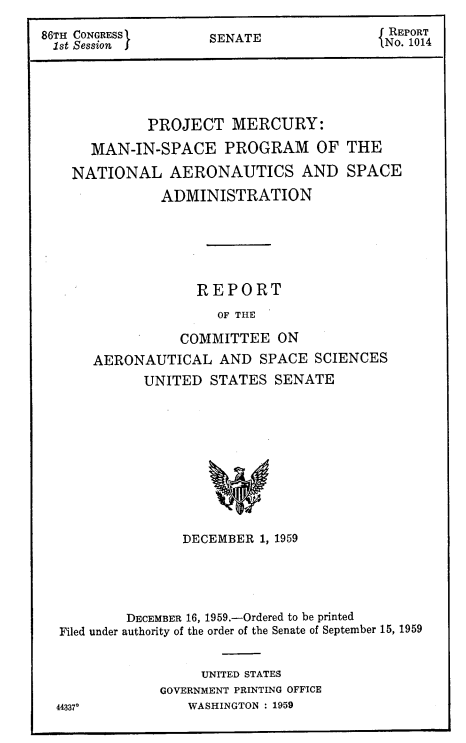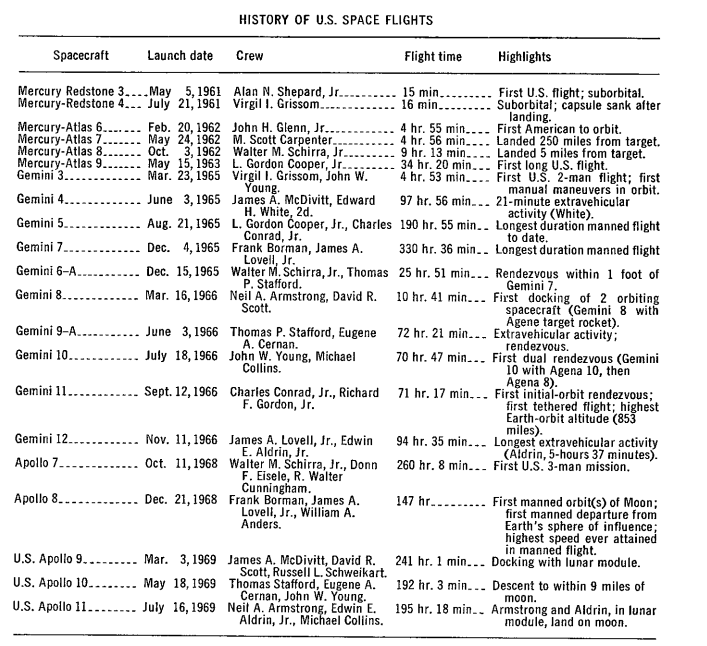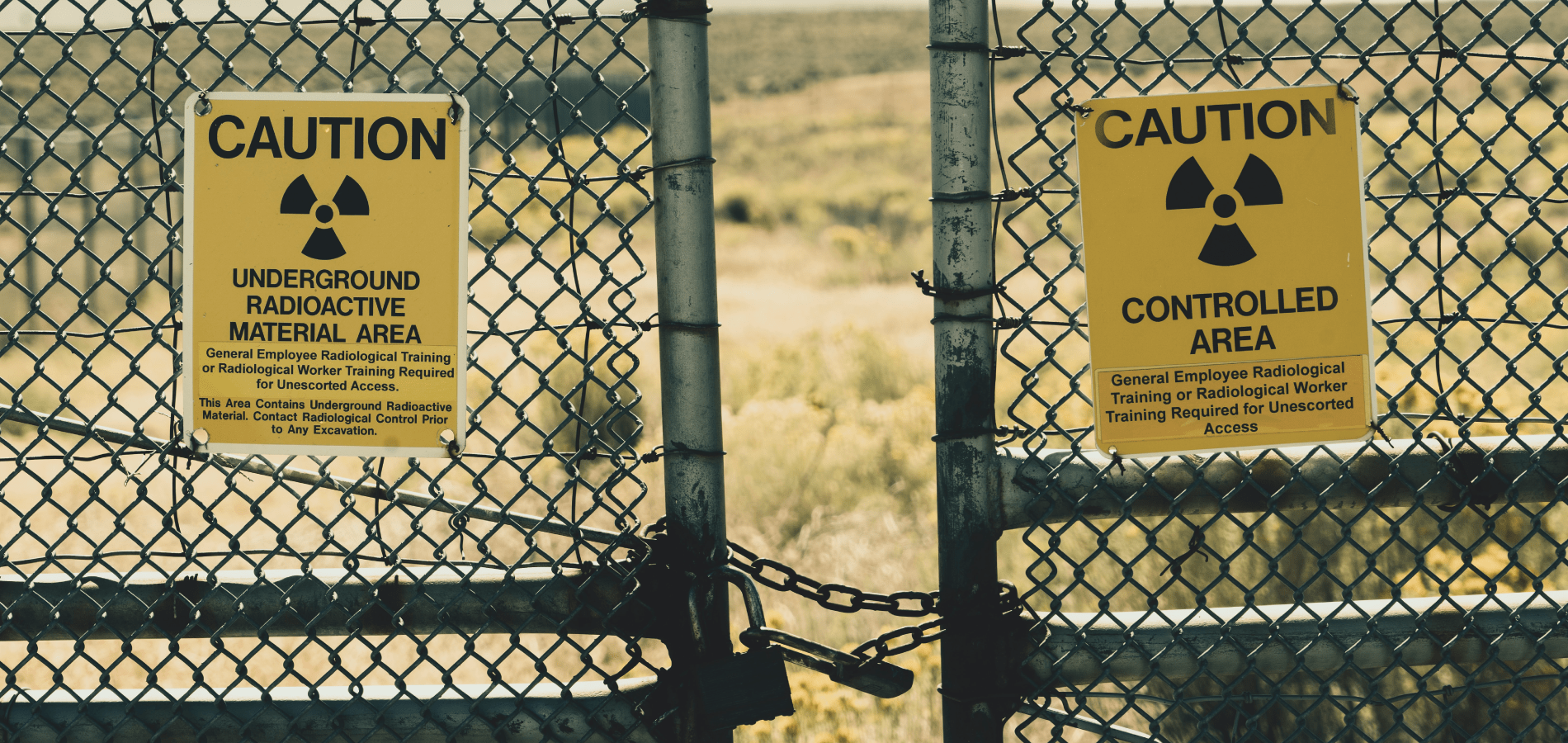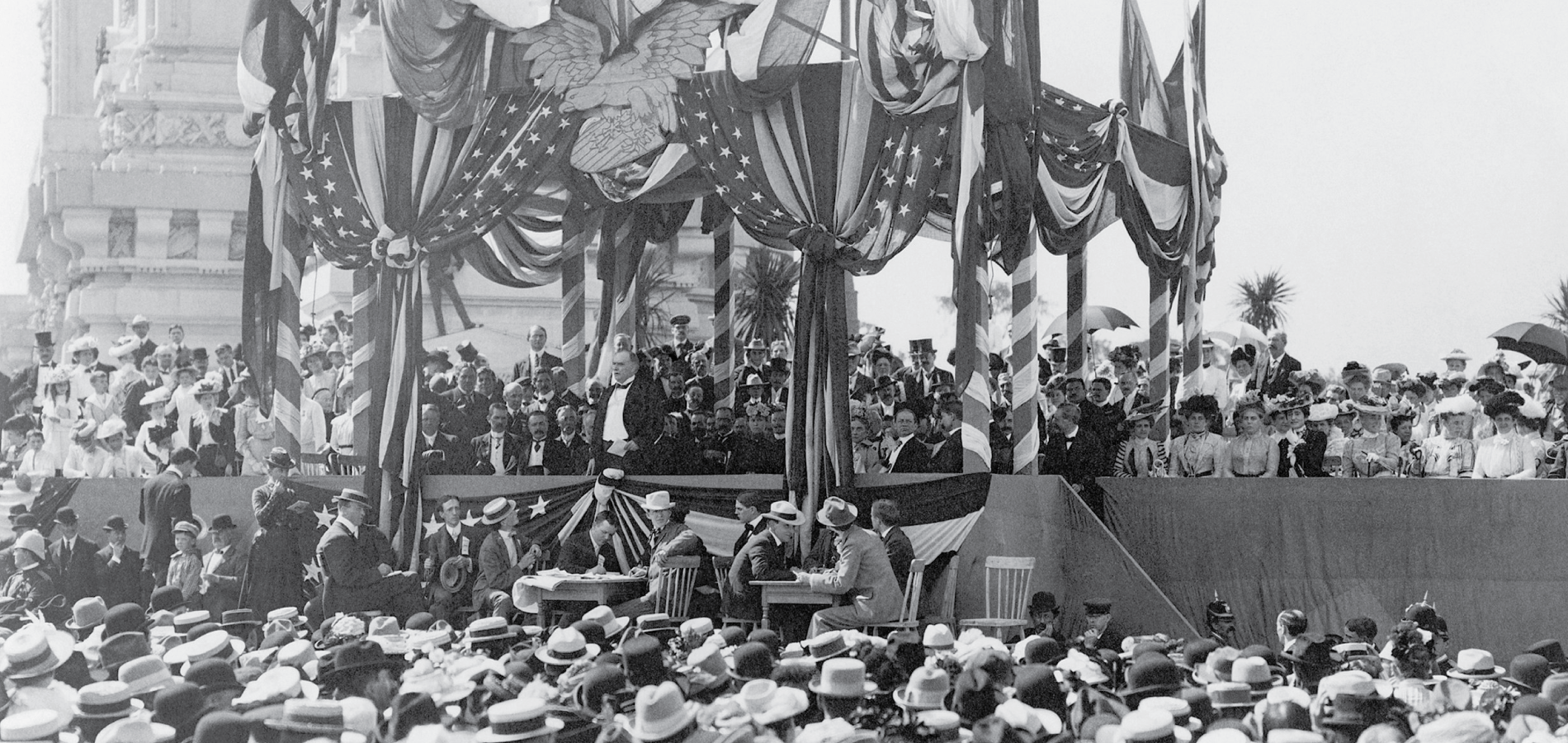Humans have always been fascinated by space. From Aristotle to Hipparchus to Ptolemy to Copernicus, great philosophers and scientists have studied the stars and planets to make meaning of the world and what lays beyond it. The moon in the night sky has held mysteries which for centuries mankind could only dream about. That all changed on July 21, 1969, when Neil Armstrong first stepped out of the Eagle lunar module onto the fine—and stinky—dust coating the surface of the moon.
In this edition of Secrets of the Serial Set, we explore just how we got to the moment when a man on the moon transformed from a science fiction fantasy to reality, and what it meant for humans—both in the United States and around the world.
The Cold War
During the 1950s, all eyes were on the U.S. and the U.S.S.R. Referred to as the Cold War, this period of geopolitical tension between America and the Soviet Union, between capitalism and communism, resulted in a series of stand-offs that nearly led to full-blown nuclear war.[1]“Compilation of material relating to U.S. defense policies in 1962.” U.S. Congressional Serial Set, , 1963, pp. I-176. HeinOnline, https://heinonline.org/HOL/P?h=hein.usccsset/usconset22072&i=891. This document can be … Continue reading Amid the race for political, economic, and technological domination, on October 4, 1957, the Soviet Union launched the first satellite, Sputnik 1, into space.[2]“National medal of science.” U.S. Congressional Serial Set, , 1959, pp. 1-6. HeinOnline, https://heinonline.org/HOL/P?h=hein.usccsset/usconset22269&i=1127. This document can be found in HeinOnline’s U.S. … Continue reading Not only was this feat embarrassing to earth-bound America, but it also sent a foreboding message that the U.S.S.R. had the technological capabilities to potentially launch nuclear weapons across countries. Hence, the gun went off on the Space Race.
President Eisenhower soon established the National Aeronautics and Space Administration (NASA) and Project Mercury, i.e. the mission to launch an American into Earth’s orbit.[3]“Project Mercury: Man-in-Space Program of National Aeronautics and Space Administration.” U.S. Congressional Serial Set, , 1959, pp. I-98. HeinOnline, https://heinonline.org/HOL/P?h=hein.usccsset/usconset22262&i=1089. … Continue reading However, the Soviets beat them to it. On April 12, 1961, Yuri Gagarin became the first person to enter space and to orbit the earth. However, America wasn’t too far behind—they would launch Alan Shepard into space the following month.

Additionally, on May 25, 1961, President John F. Kennedy addressed Congress on “Urgent National Needs,” stating, “I believe that this nation should commit itself to achieving the goal, before this decade [1960s] is out, of landing a man on the Moon and returning him safely to the Earth. No single space project in this period will be more impressive to mankind, or more important for the long-range exploration of space; and none will be so difficult or expensive to accomplish.”[4]“Documents on international aspects of exploration and use of outer space, 1954-1962.” U.S. Congressional Serial Set, , 1963, pp. I-408. HeinOnline, https://heinonline.org/HOL/P?h=hein.usccsset/usconset22063&i=217. … Continue reading Based on this speech, one might assume that JFK was pretty gung-ho about space, but this was not the case—he would later admit to advisors and NASA administrators, “I’m not that interested in space.” He was more concerned about showing the U.S.S.R. who was boss, and his vice president, Lyndon B. Johnson, suggested that putting a man on the moon would send the correct message.
The Path to the Moon
Five years of development resulted in the first unmanned Apollo mission to the moon in 1966—and it was a success. However, the excitement was quickly replaced by horror, when on January 27, 1967, a fire broke out during a manned launchpad test at Cape Canaveral Space Force Station,[5]“Committee on Aeronautical and Space Sciences U.S. Senate, 10th anniversary, 1958-1968.” U.S. Congressional Serial Set, , 1968, pp. I-110. HeinOnline, https://heinonline.org/HOL/P?h=hein.usccsset/usconset21647&i=1033. … Continue reading killing three astronauts. After the ensuing investigation, the Apollo mission continued:
- Apollo 7[6]“Report on U.S. aeronautics and space activities, 1968.” U.S. Congressional Serial Set, , 1969, pp. I-116. HeinOnline, https://heinonline.org/HOL/P?h=hein.usccsset/usconset38922&i=17. This document can be found in … Continue reading (October 1968) takes the first men to orbit around the Earth
- Apollo 8[7]“Report on U.S. aeronautics and space activities, 1968.” U.S. Congressional Serial Set, , 1969, pp. I-116. HeinOnline, https://heinonline.org/HOL/P?h=hein.usccsset/usconset38922&i=17. This document can be found in … Continue reading (December 1968) brings three astronauts to orbit the moon 10 times
- Apollo 9[8]“Aeronautics and space activities of U.S. Government, 1969.” U.S. Congressional Serial Set, , 1970, pp. I-106. HeinOnline, https://heinonline.org/HOL/P?h=hein.usccsset/usconset31186&i=18. This document can be found in … Continue reading (March 1969) includes first Saturn V/Apollo spacecraft in Earth orbit
- Apollo 10[9]“Aeronautics and space activities of U.S. Government, 1969.” U.S. Congressional Serial Set, , 1970, pp. I-106. HeinOnline, https://heinonline.org/HOL/P?h=hein.usccsset/usconset31186&i=18. This document can be found in … Continue reading (May 1969) took the full Apollo spacecraft into lunar orbit
The full Apollo spacecraft consisted of three parts: a command module, a service module, and the lunar module, which would detach from the command module to land and then ascend from the moon. After several tests and practice runs, Apollo 11 was finally ready to launch from the Saturn V rocket.

The Launch and Landing
On the morning of July 16, 1969, there were around 1 million spectators just surrounding the launch site at the Kennedy Space Center in Florida. Thousands more media representatives were present, and 25 million TV viewers watched the live broadcast in 33 different countries. On board the spacecraft were commander Neil Armstrong, lunar module pilot Buzz Aldrin, and command module pilot Michael Collins. The rocket was launched at 9:32 a.m., traveling 240,000 miles in 76 hours, successfully entering lunar orbit on July 19.

At 1:46 p.m. on July 20, the lunar module, called the Eagle and containing Armstrong and Aldrin, detached from the command module, where Collins would remain orbiting the moon until the mission was complete. And at 4:18, the Eagle touched down on the surface of the moon,[10]“Aeronautics and space activities of U.S. Government, 1969.” U.S. Congressional Serial Set, , 1970, pp. I-106. HeinOnline, https://heinonline.org/HOL/P?h=hein.usccsset/usconset31186&i=19. This document can be found in … Continue reading in an area called the Sea of Tranquility, and Armstrong famously reported to the anxious command crew back on Earth, “The Eagle has landed.”
Moonwalking
Once safely landed on the moon, Armstrong and Aldrin were scheduled to take a five-hour power nap, but understandably they decided that they would not be able to sleep until they had done some lunar exploring. Armstrong exited the Eagle at 10:39 p.m., with a television camera attached to the spacecraft to provide live footage back to Earth. At 10:56, he uttered his famous quote, “That’s one small step for a man, one giant leap for mankind.”[11]“Aeronautics and space activities of U.S. Government, 1969.” U.S. Congressional Serial Set, , 1970, pp. I-106. HeinOnline, https://heinonline.org/HOL/P?h=hein.usccsset/usconset31186&i=10. This document can be found in … Continue reading However, the audio didn’t quite pick up the “a,” which is why it is often left out when referencing this quote.
Aldrin joined Armstrong at 11:11 p.m., and together they traversed the surrounding area of the moon, taking photographs and collecting rock specimens[12]“Aeronautics and space activities of U.S. Government, 1969.” U.S. Congressional Serial Set, , 1970, pp. I-106. HeinOnline, https://heinonline.org/HOL/P?h=hein.usccsset/usconset31186&i=20. This document can be found in … Continue reading to bring back to Earth. They also planted the U.S. flag (which would be subsequently blown over when the Eagle took off again) and spoke to President Nixon on the phone.[13]“Statements by Presidents of United States on international cooperation in space, chronology, Oct. 1957-Aug. 1971.” , , 1971, pp. I-VIII. HeinOnline, https://heinonline.org/HOL/P?h=hein.usccsset/usconset21386&i=644. … Continue reading They slept on the moon that night, and then took off the next afternoon to join the command module, leaving behind a plaque that stated, “Here men from the planet Earth first set foot upon the moon–July 1969 A.D–We came in peace for all mankind.”[14]“Aeronautics and space activities of U.S. Government, 1969.” U.S. Congressional Serial Set, , 1970, pp. I-106. HeinOnline, https://heinonline.org/HOL/P?h=hein.usccsset/usconset31186&i=7. This document can be found in … Continue reading
At 1:54 p.m. on July 21, the Eagle ascended from the moon and joined the command module, where Armstrong and Aldrin reunited with Collins. They safely landed in the Pacific Ocean at 12:51 p.m. on July 24.

The End of the Space Race
After a mandatory 3-week quarantine to prevent the potential spread of any moon-borne diseases, the three astronauts were celebrated in parades in New York and Chicago, along with a state dinner in Los Angeles, where Nixon presented each of them with a Presidential Medal of Freedom. They would then speak before a joint session of Congress on September 16[15]115 Cong. Rec. 25609 (1969). This document can be found in HeinOnline’s U.S. Congressional Documents database. before embarking on an international tour to meet with leaders around the world.
However, Apollo’s success wasn’t celebrated by everyone. The launch was controversial, as it was a giant expense at a time when the country was suffering from racial and financial inequalities. Civil rights leader Ralph Abernathy led a protest right before the Apollo launch,[16]44 (2020) The Legacy of Apollo: Hearing before the Committee on Science, Space, and Technology, House of Representatives, One Hundred Sixteenth Congress, First Session, July 16, 2019 This document can be found in HeinOnline’s U.S. … Continue reading with signs that read, “$12 a day to feed an astronaut. We could feed a starving child for $8.” In response, NASA Administrator Thomas Paine spoke with the protestors, stating that he hoped the launch would be “a spur to the nation to tackle problems boldly in other areas,” and inviting them and their families to VIP access at the viewing area.
However, after putting a man on the moon, civilian support for space exploration diminished significantly. As the Cold War began to ease, Americans wanted the government to focus more on tackling the problems back on Earth.
Help Us Complete the Project
Secrets of the Serial Set is an exciting and informative blog series from HeinOnline dedicated to unveiling the wealth of American history found in the United States Congressional Serial Set. Documents from additional HeinOnline databases have been incorporated to supplement research materials for non-U.S. related events discussed.
If your library holds all or part of the Serial Set, and you are willing to assist us, please contact Steve Roses at 716-882-2600 or sroses@wshein.com. HeinOnline would like to give special thanks to all of the libraries that have provided generous contributions which have resulted in the steady growth of HeinOnline’s U.S. Congressional Serial Set.
HeinOnline Sources[+]
| ↑1 | “Compilation of material relating to U.S. defense policies in 1962.” U.S. Congressional Serial Set, , 1963, pp. I-176. HeinOnline, https://heinonline.org/HOL/P?h=hein.usccsset/usconset22072&i=891. This document can be found in HeinOnline’s U.S. Congressional Serial Set. |
|---|---|
| ↑2 | “National medal of science.” U.S. Congressional Serial Set, , 1959, pp. 1-6. HeinOnline, https://heinonline.org/HOL/P?h=hein.usccsset/usconset22269&i=1127. This document can be found in HeinOnline’s U.S. Congressional Serial Set. |
| ↑3 | “Project Mercury: Man-in-Space Program of National Aeronautics and Space Administration.” U.S. Congressional Serial Set, , 1959, pp. I-98. HeinOnline, https://heinonline.org/HOL/P?h=hein.usccsset/usconset22262&i=1089. This document can be found in HeinOnline’s U.S. Congressional Serial Set. |
| ↑4 | “Documents on international aspects of exploration and use of outer space, 1954-1962.” U.S. Congressional Serial Set, , 1963, pp. I-408. HeinOnline, https://heinonline.org/HOL/P?h=hein.usccsset/usconset22063&i=217. This document can be found in HeinOnline’s U.S. Congressional Serial Set. |
| ↑5 | “Committee on Aeronautical and Space Sciences U.S. Senate, 10th anniversary, 1958-1968.” U.S. Congressional Serial Set, , 1968, pp. I-110. HeinOnline, https://heinonline.org/HOL/P?h=hein.usccsset/usconset21647&i=1033. This document can be found in HeinOnline’s U.S. Congressional Serial Set. |
| ↑6, ↑7 | “Report on U.S. aeronautics and space activities, 1968.” U.S. Congressional Serial Set, , 1969, pp. I-116. HeinOnline, https://heinonline.org/HOL/P?h=hein.usccsset/usconset38922&i=17. This document can be found in HeinOnline’s U.S. Congressional Serial Set. |
| ↑8, ↑9 | “Aeronautics and space activities of U.S. Government, 1969.” U.S. Congressional Serial Set, , 1970, pp. I-106. HeinOnline, https://heinonline.org/HOL/P?h=hein.usccsset/usconset31186&i=18. This document can be found in HeinOnline’s U.S. Congressional Serial Set. |
| ↑10 | “Aeronautics and space activities of U.S. Government, 1969.” U.S. Congressional Serial Set, , 1970, pp. I-106. HeinOnline, https://heinonline.org/HOL/P?h=hein.usccsset/usconset31186&i=19. This document can be found in HeinOnline’s U.S. Congressional Serial Set. |
| ↑11 | “Aeronautics and space activities of U.S. Government, 1969.” U.S. Congressional Serial Set, , 1970, pp. I-106. HeinOnline, https://heinonline.org/HOL/P?h=hein.usccsset/usconset31186&i=10. This document can be found in HeinOnline’s U.S. Congressional Serial Set. |
| ↑12 | “Aeronautics and space activities of U.S. Government, 1969.” U.S. Congressional Serial Set, , 1970, pp. I-106. HeinOnline, https://heinonline.org/HOL/P?h=hein.usccsset/usconset31186&i=20. This document can be found in HeinOnline’s U.S. Congressional Serial Set. |
| ↑13 | “Statements by Presidents of United States on international cooperation in space, chronology, Oct. 1957-Aug. 1971.” , , 1971, pp. I-VIII. HeinOnline, https://heinonline.org/HOL/P?h=hein.usccsset/usconset21386&i=644. This document can be found in HeinOnline’s U.S. Congressional Serial Set. |
| ↑14 | “Aeronautics and space activities of U.S. Government, 1969.” U.S. Congressional Serial Set, , 1970, pp. I-106. HeinOnline, https://heinonline.org/HOL/P?h=hein.usccsset/usconset31186&i=7. This document can be found in HeinOnline’s U.S. Congressional Serial Set. |
| ↑15 | 115 Cong. Rec. 25609 (1969). This document can be found in HeinOnline’s U.S. Congressional Documents database. |
| ↑16 | 44 (2020) The Legacy of Apollo: Hearing before the Committee on Science, Space, and Technology, House of Representatives, One Hundred Sixteenth Congress, First Session, July 16, 2019 This document can be found in HeinOnline’s U.S. Congressional Documents database. |



